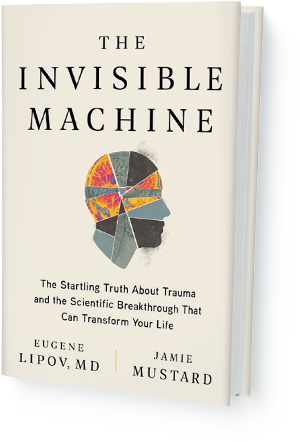Trevor Beaman is an active duty US Army Special Forces soldier, a husband, and a father. He is also a strong advocate for mental health and trauma awareness.
By sharing his story, steeped in vulnerability and determination, Trevor serves as a beacon of hope for those traveling a simlar path to overcome trauma.
“When I was down in Kandahar . . . I told myself at that point, this is what I am going to do for a living. Being out in the middle of nowhere . . . being a person who can do better, helping the people start to defend themselves against the Taliban and other [dangerous] people outside of the village. And then there was this political thing I witnessed that changed me forever: I got to see the first woman vote in the election for President Karzai. To think that we as an army, as a nation, helped allow that to happen was powerful. It meant something. That’s freedom . . . That’s freeing the oppressed.”
— TREVOR BEAMAN, from The Invisible Machine
 Trevor Beaman speaks to auditoriums of people (like the upcoming TEDx event highlighted above), to journalists reporting for various media outlets (find links below), and — in moving detail — to the authors of the newly-released book, The Invisible Machine: The Startling Truth About Trauma and the Scientific Breakthrough That Can Transform Your Life (which may also become a documentary film, in the near future). Written by Dr. Eugene Lipov and artist/futurist/multi-media consultant/writer Jamie Mustard, with Holly Lorinz, The Invisible Machine weaves hard science with moving human stories, revealing how a centuries-old treatment was developed.
Trevor Beaman speaks to auditoriums of people (like the upcoming TEDx event highlighted above), to journalists reporting for various media outlets (find links below), and — in moving detail — to the authors of the newly-released book, The Invisible Machine: The Startling Truth About Trauma and the Scientific Breakthrough That Can Transform Your Life (which may also become a documentary film, in the near future). Written by Dr. Eugene Lipov and artist/futurist/multi-media consultant/writer Jamie Mustard, with Holly Lorinz, The Invisible Machine weaves hard science with moving human stories, revealing how a centuries-old treatment was developed.
‘It can happen to anyone:’ How the U.S. Army Special Operations Command is combating suicide
— The Fayetteville Observer
Army Special Operators Seek to Reduce Suicide with ‘Bottom-Led’ Approach
— DefenseOne.com
**NOT identified by name, Trevor was the patient who took part in this study, sharing his story in the process. The study is the first to document such a synergy between the two treatments.
DSR “resets” a person’s fight-or-flight response to pre-trauma state. With an efficacy rate of 80-85%, and few side effects, DSR has proved to be unrivaled when compared to conventional treatments and formidable when used in conjunction with other treatments, such as psychotherapy.
In less than 60 seconds, you watch this video in its entirety. Sponsored by Erase PTSD Now, this recently-produced PSA will likely air on national broadcast TV, in in hopes of amplifying a call for change — to replace the clinical diagnosis of PTSD with “PTSI” (for post-traumatic stress injury). Dr. Eugene Lipov and his friend and colleague, Dr. Frank Ochberg are among many other leaders within the medical community, and beyond, who believe that a successful change in the labeling of the condition will help remove the stigma that comes with the diagnosis — and, it will save lives in the process. The movement for change points to the fact that the condition is, indeed, physiological in nature, evidence of which can be seen on advanced brain scans.